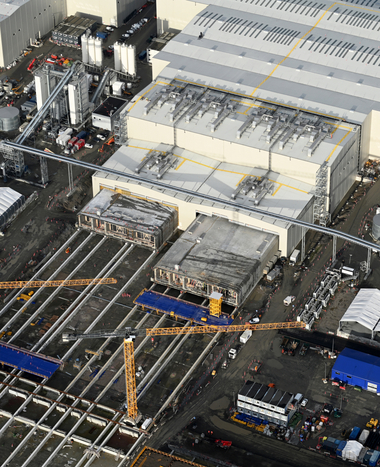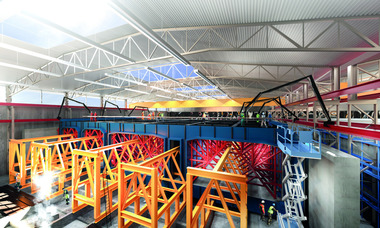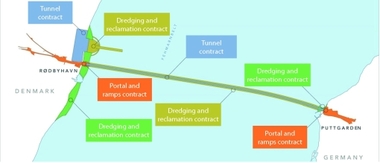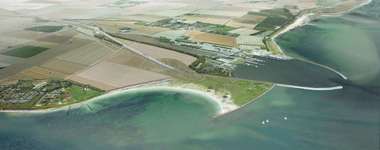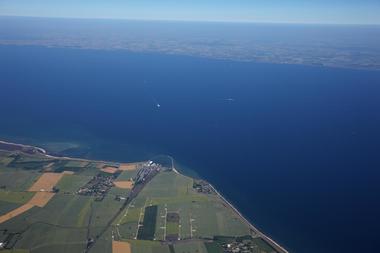Fehmarnbelt Tunnel: Production of the Concrete Elements for the Immersed Tunnel
Denmark/Germany. Production of the tunnel elements for the Fehmarnbelt Tunnel will be in full swing at the 150-hectare tunnel element factory in Rødbyhavn in 2024. Elements are to be concreted on all production lines from January 2024. Since the end of 2023, work on the first tunnel element has progressed so far that it is protruding from one of the three production halls.
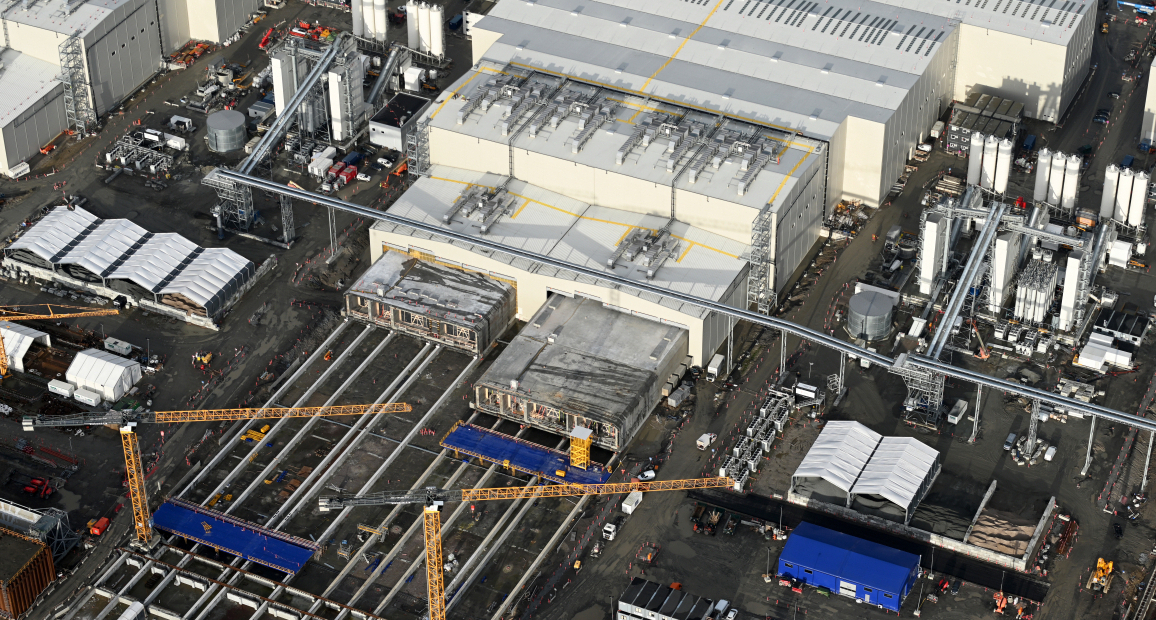 Since the end of 2023, work on the first tunnel elements of the Fehmarnbelt Tunnel has progressed so far that they are protruding from one of the three production halls
Since the end of 2023, work on the first tunnel elements of the Fehmarnbelt Tunnel has progressed so far that they are protruding from one of the three production halls
Credit/Quelle: Femern A/S
Puttgarden Construction Site
On the German tunnel construction site, which covers around 100 hectares, the focus in 2024 will be on work in the portal area and on two of a total of three bridges to be built.
In the portal area, construction of the tunnel will continue using the cut-and-cover method. More specifically, this means that first the floor, then the side walls and finally the tunnel roof of the individual sections will be concreted on site step by step using conventional construction methods. A total of around 450 metres of tunnel will be created on land in this way.
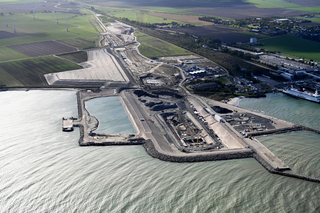 Puttgarden construction site, Germany (October 2023)
Puttgarden construction site, Germany (October 2023)
Credit/Quelle: Femern A/S
As soon as the first sections have been completed, a new embankment will be built above them, probably by the summer. Once this has been completed, the northern excavation pit between the two embankments will be flooded and the current embankment, which made the work in the excavation pit possible, can be removed. The new embankment will then form the future coastline in the northern portal area.
Further south, just behind the former coastline, an approximately 150 metre long light transition zone will follow the open cut tunnel. It creates a smooth transition to the motorway and railway line on land. A building for technology and maintenance, the so-called portal building, will be erected at the entrance. Work will continue in 2024 in the excavation pit that has already been dug for the future portal building. The first concrete work will begin in spring.
Rødbyhavn Construction Site
The tunnel element factory in Rødbyhavn, which covers around 150 hectares, will be producing tunnel elements at high capacity in 2024. Elements will be concreted on all production lines from January 2024. A total of 79 standard elements and 10 special elements will be produced in the factory over the next few years. Each standard element consists of nine of the approximately 24 metre long segments. A total of 711 segments will therefore be produced.
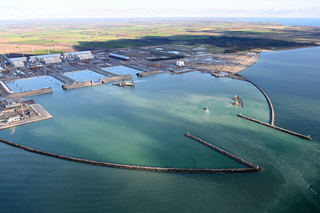 Rødbyhavn construction site, Denmark (November 2023)
Rødbyhavn construction site, Denmark (November 2023)
Credit/Quelle: Femern A/S
The lowering phase of the first element off the Danish coast is scheduled to start in summer 2024. The tunnel elements will be transported into the Fehmarnbelt via the basins in front of the factory and the working harbour. The lowering process alone is expected to take around 50 hours.
The working harbour in Rødbyhavn has been in operation since summer 2022. In 2024, an additional quay will be built in the eastern part of the harbour, which will primarily be used to deliver aggregates for concrete production. At this quay, cargo ships will be able to unload the materials directly into a large funnel. From there, they will be transported on a conveyor belt to their interim storage facility next to the factory buildings. The material will also be transported on a conveyor belt between the concrete mixing plants and the interim storage facility. The conveyor belts have a total length of 1.3 kilometres and ensure that the required materials can be transported quickly and efficiently across the construction site.
Until the start of the lowering phase, the first tunnel sections at the Danish portal will also be built using the cut-and-cover method. The sequence of work largely corresponds to that in the German portal. Here too, the tunnel sections will be concreted in the conventional manner and a new embankment will be built above them as soon as they are completed. The existing temporary embankment can then be removed and the first element docked and connected to the tunnel portal.

